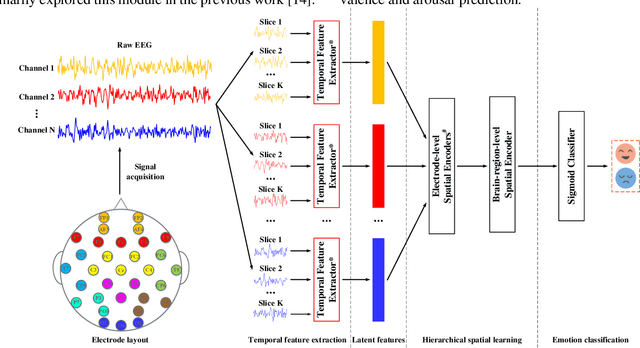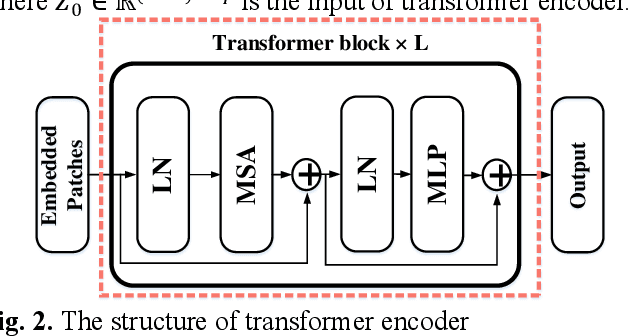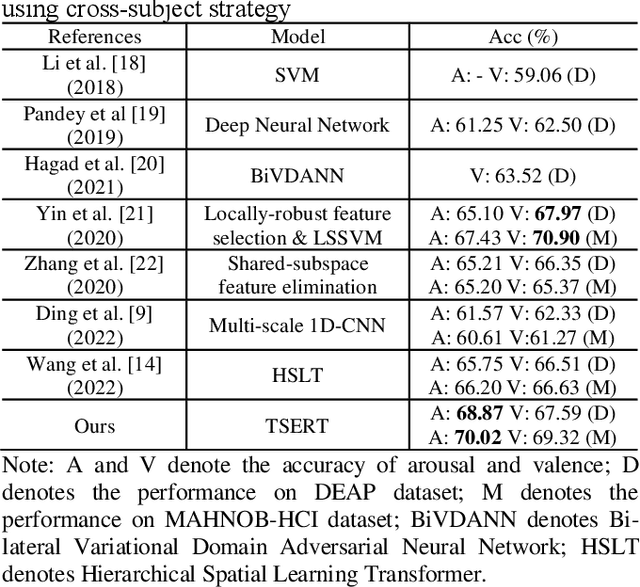Zhong Yin
Astra: Toward General-Purpose Mobile Robots via Hierarchical Multimodal Learning
Jun 06, 2025Abstract:Modern robot navigation systems encounter difficulties in diverse and complex indoor environments. Traditional approaches rely on multiple modules with small models or rule-based systems and thus lack adaptability to new environments. To address this, we developed Astra, a comprehensive dual-model architecture, Astra-Global and Astra-Local, for mobile robot navigation. Astra-Global, a multimodal LLM, processes vision and language inputs to perform self and goal localization using a hybrid topological-semantic graph as the global map, and outperforms traditional visual place recognition methods. Astra-Local, a multitask network, handles local path planning and odometry estimation. Its 4D spatial-temporal encoder, trained through self-supervised learning, generates robust 4D features for downstream tasks. The planning head utilizes flow matching and a novel masked ESDF loss to minimize collision risks for generating local trajectories, and the odometry head integrates multi-sensor inputs via a transformer encoder to predict the relative pose of the robot. Deployed on real in-house mobile robots, Astra achieves high end-to-end mission success rate across diverse indoor environments.
A Ducted Fan UAV for Safe Aerial Grabbing and Transfer of Multiple Loads Using Electromagnets
Sep 24, 2024Abstract:In recent years, research on aerial grasping, manipulation, and transportation of objects has garnered significant attention. These tasks often require UAVs to operate safely close to environments or objects and to efficiently grasp payloads. However, current widely adopted flying platforms pose safety hazards: unprotected high-speed rotating propellers can cause harm to the surroundings. Additionally, the space for carrying payloads on the fuselage is limited, and the restricted position of the payload also hinders efficient grasping. To address these issues, this paper presents a coaxial ducted fan UAV which is equipped with electromagnets mounted externally on the fuselage, enabling safe grasping and transfer of multiple loads in midair without complex additional actuators. It also has the capability to achieve direct human-UAV cargo transfer in the air. The forces acting on the loads during magnetic attachment and their influencing factors were analyzed. An ADRC controller is utilized to counteract disturbances during grasping and achieve attitude control. Finally, flight tests are conducted to verify the UAV's ability to directly grasp multiple loads from human hands in flight while maintaining attitude tracking.
Temporal-spatial Representation Learning Transformer for EEG-based Emotion Recognition
Nov 16, 2022



Abstract:Both the temporal dynamics and spatial correlations of Electroencephalogram (EEG), which contain discriminative emotion information, are essential for the emotion recognition. However, some redundant information within the EEG signals would degrade the performance. Specifically,the subjects reach prospective intense emotions for only a fraction of the stimulus duration. Besides, it is a challenge to extract discriminative features from the complex spatial correlations among a number of electrodes. To deal with the problems, we propose a transformer-based model to robustly capture temporal dynamics and spatial correlations of EEG. Especially, temporal feature extractors which share the weight among all the EEG channels are designed to adaptively extract dynamic context information from raw signals. Furthermore, multi-head self-attention mechanism within the transformers could adaptively localize the vital EEG fragments and emphasize the essential brain regions which contribute to the performance. To verify the effectiveness of the proposed method, we conduct the experiments on two public datasets, DEAP and MAHNOBHCI. The results demonstrate that the proposed method achieves outstanding performance on arousal and valence classification.
Locally temporal-spatial pattern learning with graph attention mechanism for EEG-based emotion recognition
Aug 19, 2022



Abstract:Technique of emotion recognition enables computers to classify human affective states into discrete categories. However, the emotion may fluctuate instead of maintaining a stable state even within a short time interval. There is also a difficulty to take the full use of the EEG spatial distribution due to its 3-D topology structure. To tackle the above issues, we proposed a locally temporal-spatial pattern learning graph attention network (LTS-GAT) in the present study. In the LTS-GAT, a divide-and-conquer scheme was used to examine local information on temporal and spatial dimensions of EEG patterns based on the graph attention mechanism. A dynamical domain discriminator was added to improve the robustness against inter-individual variations of the EEG statistics to learn robust EEG feature representations across different participants. We evaluated the LTS-GAT on two public datasets for affective computing studies under individual-dependent and independent paradigms. The effectiveness of LTS-GAT model was demonstrated when compared to other existing mainstream methods. Moreover, visualization methods were used to illustrate the relations of different brain regions and emotion recognition. Meanwhile, the weights of different time segments were also visualized to investigate emotion sparsity problems.
Identification of mental fatigue in language comprehension tasks based on EEG and deep learning
Apr 14, 2021



Abstract:Mental fatigue increases the risk of operator error in language comprehension tasks. In order to prevent operator performance degradation, we used EEG signals to assess the mental fatigue of operators in human-computer systems. This study presents an experimental design for fatigue detection in language comprehension tasks. We obtained EEG signals from a 14-channel wireless EEG detector in 15 healthy participants. Each participant was given a cognitive test of a language comprehension task, in the form of multiple choice questions, in which pronoun references were selected between nominal and surrogate sentences. In this paper, the 2400 EEG fragments collected are divided into three data sets according to different utilization rates, namely 1200s data set with 50% utilization rate, 1500s data set with 62.5% utilization rate, and 1800s data set with 75% utilization rate. In the aspect of feature extraction, different EEG features were extracted, including time domain features, frequency domain features and entropy features, and the effects of different features and feature combinations on classification accuracy were explored. In terms of classification, we introduced the Convolutional Neural Network (CNN) method as the preferred method, It was compared with Least Squares Support Vector Machines(LSSVM),Support Vector Machines(SVM),Logistic Regression (LR), Random Forest(RF), Naive Bayes (NB), K-Nearest Neighbor (KNN) and Decision Tree(DT).According to the results, the classification accuracy of convolutional neural network (CNN) is higher than that of other classification methods. The classification results show that the classification accuracy of 1200S dataset is higher than the other two datasets. The combination of Frequency and entropy feature and CNN has the highest classification accuracy, which is 85.34%.
Cross-individual Recognition of Emotions by a Dynamic Entropy based on Pattern Learning with EEG features
Sep 26, 2020



Abstract:Use of the electroencephalogram (EEG) and machine learning approaches to recognize emotions can facilitate affective human computer interactions. However, the type of EEG data constitutes an obstacle for cross-individual EEG feature modelling and classification. To address this issue, we propose a deep-learning framework denoted as a dynamic entropy-based pattern learning (DEPL) to abstract informative indicators pertaining to the neurophysiological features among multiple individuals. DEPL enhanced the capability of representations generated by a deep convolutional neural network by modelling the interdependencies between the cortical locations of dynamical entropy based features. The effectiveness of the DEPL has been validated with two public databases, commonly referred to as the DEAP and MAHNOB-HCI multimodal tagging databases. Specifically, the leave one subject out training and testing paradigm has been applied. Numerous experiments on EEG emotion recognition demonstrate that the proposed DEPL is superior to those traditional machine learning (ML) methods, and could learn between electrode dependencies w.r.t. different emotions, which is meaningful for developing the effective human-computer interaction systems by adapting to human emotions in the real world applications.
 Add to Chrome
Add to Chrome Add to Firefox
Add to Firefox Add to Edge
Add to Edge